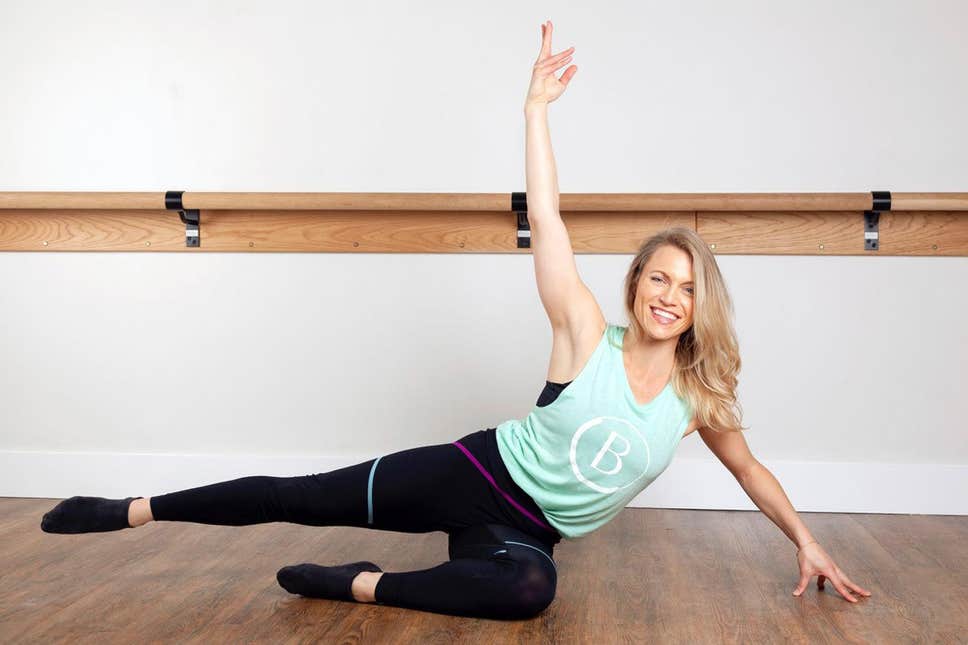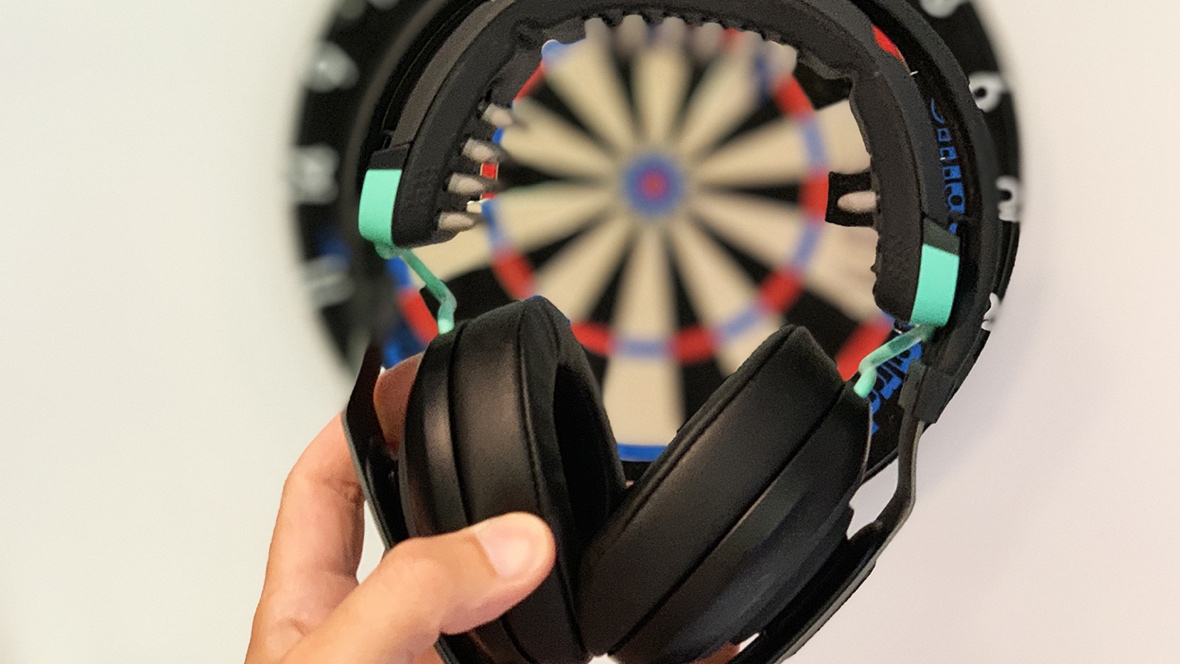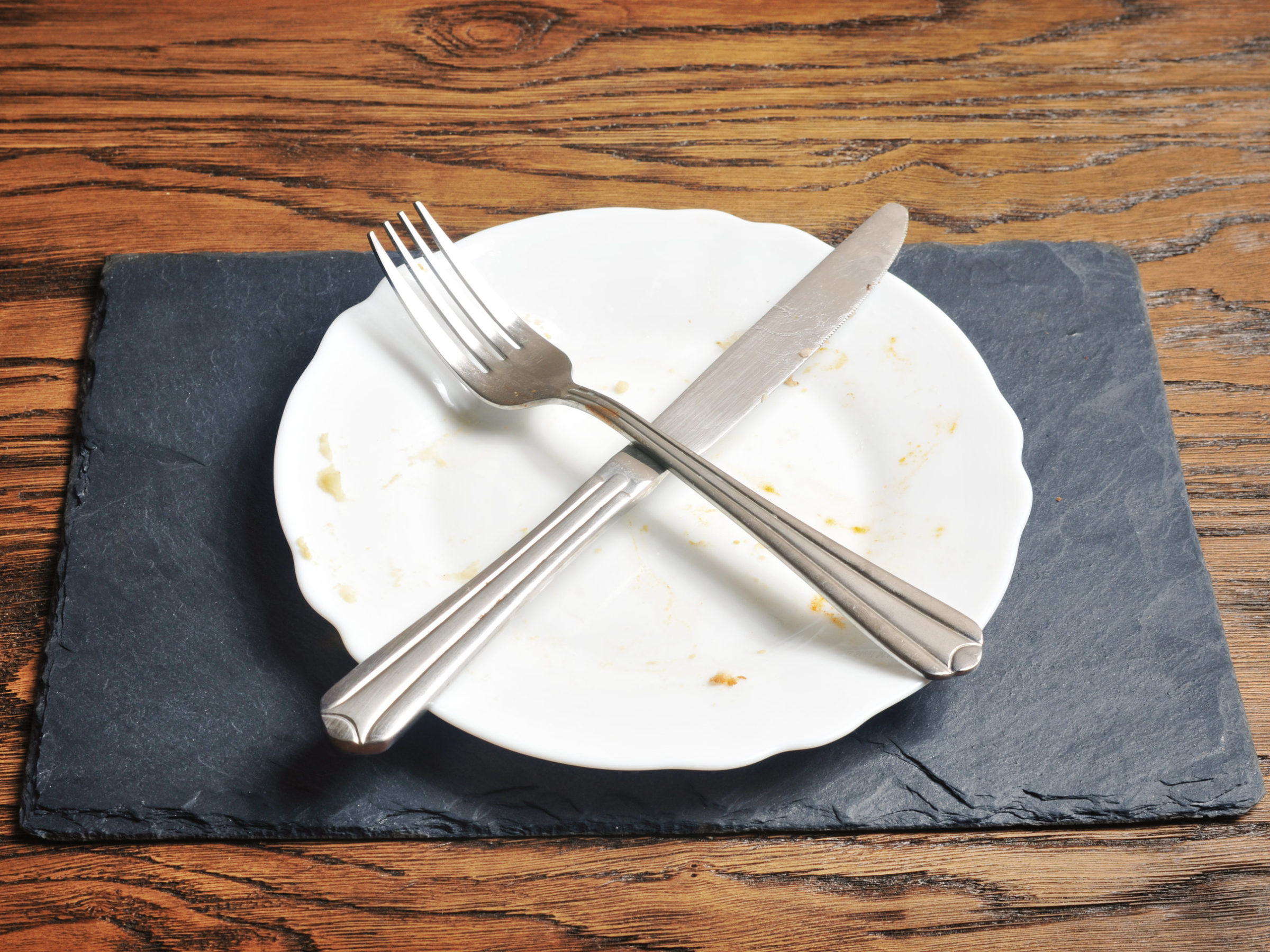Nature Knows and Psionic Success
God provides
For the Best Town Hall Ever, Science Says Do These 5 Things

Employee town halls are such a valuable internal communication channel that it’s a shame when these meetings are boring, irrelevant and uninspiring. That’s why I so frequently write about why to improve town halls –and why I often offer suggestions about how to do so. In case you need another reason to take a new approach to town halls, consider this: The traditional way to put together these meetings–a series of long, fact-filled presentations –doesn’t take into account how people’s brains operate. In his book Brain Rules , John Medina explains the science behind the brain and how to use this science to improve aspects of work, school and your personal life. Based on concepts in the book, here are five practical ways to improve your next town hall meeting: 1. Limit each topic/segment to 10 minutes. Researchers have proven that after 10 minutes into even the most interesting presentation, people start zoning out. Writes Medina, "The brain seems to be making choices according to some stubborn timing pattern, undoubtedly influenced by both culture and gene." So an easy change is to boil each topic down to just 10 minutes. But what if you want to cover a topic in depth? Then you need to structure your content to create a natural break and shift gears after the 10-minute mark. (See #4.) 2. Emphasize meaning, not details. You know all those PowerPoint slides you prepare for the town hall–with data about finances, initiatives and a host of other topics? That information is just white noise, according to brain science. "If we don’t know the gist–the meaning –of information, we are unlikely to pay attention to its details," writes Medina. The brain selects meaning-laden information for further processing and leaves the rest alone." The solution, of course, is to ditch […]
Best Teas to Boost Brain Function and Creativity

Freelance contribution by: Lucy Wyndham Drinking a hot mug of tea not only helps us feel good, but it also has a role to play in improving brain function and boosting creativity. It is thought that the caffeine and L-theanine content in tea have the effect of decreasing mental fatigue and boosting concentration; giving rise to greater ideas. So whether you are an artist, musician, writer, actor, or are in any other creative profession – drinking any of the teas listed below could help stoke the creative fires and reinvigorate your practice. Rhodiola As well as fighting fatigue, decreasing stress, and improving exercise performance, studies show that drinking rhodiola tea can improve brain function . One study found that rhodiola decreased mental fatigue and improved performance on work-related tasks by 20% compared with the placebo. Rhodiola has been shown to help increase mental performance even at times when the body might already be compromised by tiredness, stress, or intensive exercise. Also, if you enjoy the smell of roses or Turkish delights then this is the tea for you! It has a lovely dark pink hue and it smells and tastes like rose. Green Tea Whether you are suffering from writer’s block, looking for inspiration for your next drawing , or you’re a student writing an essay, a cup of green tea will do the trick in helping you get the creative juices flowing. The high levels of catechins and polyphenols found in green tea help stimulate the brain and improve focus and cognitive function. However, the health benefits of green tea go way beyond boosting brain function and creativity. The wealth of antioxidants found in green tea could have beneficial effects on the brain by helping prevent stress-related aging and reducing the risk of cognitive impairment in older age. […]
Meet Taskmaster, The Skull-Faced Master Combatant Coming To The MCU

At 2019’s Comic-Con International in San Diego, the first footage of 2020’s Black Widow was revealed to the world. It included a look at the film’s primary antagonist, Taskmaster, which left comic book fans thrilled and everyone else wondering “Who is Taskmaster?” The supervillain known as Taskmaster is one of Marvel Comics’ greatest fighters, but there are few who would put “Tasky” and The Avengers at the same level of prominence. The Marvel Cinematic Universe has a habit of elevating lesser-known characters to new heights of popularity, and that seems inevitable for Tony Masters – an individual who was perhaps previously best recognized for the excellent Marvel Legends Taskmaster action figure currently on the market. Long-time readers of Marvel Comics, however, know that Taskmaster is far more than just a generic baddie with a sword and shield – he’s one of the best hand-to-hand combatants in all of comic books and has one of the most unique power sets to boot. Photo: Marvel Comics Tony Masters was born with the innate ability of “photographic reflexes,” though there’s never been any indication that he’s a mutant. While still a young boy, Masters discovers that his power allows him to replicate the movements of anyone he observes in motion, meaning he can learn to ball like a pro just by watching basketball on TV and can learn to dive like an Olympian just by hanging out at the pool. In a world full of superheroes and other individuals with marvelous abilities, Masters’s photographic reflexes have potential – though he doesn’t realize their full implications until he reaches adulthood. His powers are what eventually lead him to become the villain known as Taskmaster, but not before a brief period in which he attempts to use his gifts for the greater good. The […]
12 Ways To Give Your Diet A Mediterranean Makeover And Live Longer

Food has a powerful effect on your brain. And research shows that eating a variation of the Mediterranean diet – focusing on whole grains, fruits and vegetables, fish, and nuts – is associated with a reduced risk of cognitive decline. In the late 1950s, physiologist Ancel Keys was conducting research in southern Italy and Greece when he made a surprising discovery : The people who lived in countries that bordered the Mediterranean Sea seemed healthier than any of the other populations he’d studied around the globe. In fact, they enjoyed some of the longest lives in the world. The people in this region had diets focused on fresh fruits and vegetables, whole grains, and beans. They used olive oil (and plenty of it) as their primary fat. They flavoured their food with herbs and spices instead of salt. And they ate very little meat and few refined carbohydrates or processed foods. An ever-growing body of evidence shows that the Mediterranean style of eating is one of the most effective ways to maintain a healthy weight, feel great, and live a long, vigorous life. What’s more, eating a variation of the Mediterranean diet – the aptly titled MIND diet – has been shown to improve brain health, according to a study published in Alzheimer’s & Dementia . This finding follows an earlier study by the same researchers, which found that the MIND diet may reduce the risk of getting Alzheimer’s disease, period. Based on years of research on foods known to benefit (and harm) thinking and memory, the MIND diet focuses on eating habits that promote dementia protection. What makes the MIND diet a standout? For one thing, it’s low in unhealthy trans and saturated fats. For another, it’s loaded with specific nutrients and phytonutrients shown to slow cognitive decline, […]
18 Butyrate Benefits + Side Effects & Sources

Butyrate is crucial for gut and brain health, fights autoimmunity and obesity, and may protect against cancer. Read on to learn about the benefits of butyrate, possible side effects, and sources. Butyrate is a short-chain fatty acid (SCFA). Fatty acids are the building blocks of fats that our cells need to function. Butyrate is made when the bacteria living in our guts ferment otherwise indigestible fibers from grains, beans, onions, bananas, and other foods rich in complex carbs [ 1 , 2 , 3 ]. Butyrate is the preferred energy source for the cells in your colon wall. It is essential for maintaining a healthy barrier between the colon and bloodstream and it prevents inflammation in the gut [ 4 ]. Butyrate production depends largely on the pH of the large intestine. Bacteria that produce butyrate thrive in a more acidic environment (lower pH), whereas bacteria that produce other SCFAs such as acetate and propionate prefer a more alkaline environment (higher pH) [ 3 ]. Is a major energy source for colon cells Has anti-cancer effects Increases mitochondrial activity Prevents toxins from crossing the gut barrier Improves insulin sensitivity Promotes weight loss Fight inflammation Is antibacterial Protects the brain Strong odor Lack of high-quality human research Difficult to separate butyrate from other short-chain fatty acids in some cases “I personally take 4 pills of calcium/magnesium butyrate twice a day, with lots of resistant starch, which the gut bacteria feeds off of to produce butyrate. I like calcium and magnesium butyrate because I don’t consume enough calcium and I prefer to have more magnesium. I already take in enough sodium. Since I take a total of 8 pills a day, I avoid brands that add excipients. I also take modified citrus pectin . It has a nootropic and wakefulness-promoting effect […]
Essential Science: Neuroscience is aiding selfdriving cars

There are many projects underway to attempt to improve the navigation of self-driving vehicles. The answer to improved navigation could rest with neuroscience, in the form of special ‘mapping’ brain cells. Improvements to autonomous cars, and robots with navigational systems designed to undertake location missions, could come down to the seemingly unlikely combination of rats, a box of Froot Loops, and a team of neuroscientists from Boston University. Smart rats, smart cars The study, sponsored by the U.S. Department of Defense, is seeking a better understanding of the brain’s navigational system and then to apply this knowledge to develop smarter autonomous vehicles. The idea is to design a vehicle (or robot) navigation system that is capable of moving around obstacles as well as any living organisms. File photo: Delphi took their self-driving Audi SQ5 on a 3400 mile road-trip across the US File photo: Delphi took their self-driving Audi SQ5 on a 3400 mile road-trip across the US Delphi The researchers have found specialized brain cells which give rats a form of ‘personal map’ of their surroundings. It is quite probable that human brains possess the neurons as well, although this needs to be established by further study. Google map of the brain The research is based on exploring the hippocampus . Humans (and rats) have two hippocampi, and these form the limbic system, helping with the consolidation of information from short-term memory to long-term memory. This part of the brain is also important for the spatial memory that enables navigation. Google Maps now lets you save areas for offline viewing while still supporting offline directions and navigation. The area in this image consumes around 375MB of space. Google Maps now lets you save areas for offline viewing while still supporting offline directions and navigation. The area in this […]
Juice up your brain: Pomegranates improve brain function and blood flow among the elderly

( Natural News ) Pomegranates are some of the healthiest fruits on the planet. They are rich in vitamins and minerals that promote overall health. According to a study published in the journal Evidence-Based Complementary and Alternative Medicine , pomegranate juice can improve cognitive function and blood flow among the elderly. Previous studies have shown that pomegranate juice protects neurons in the brain against aluminum, stroke, and glucose deprivation-associated neurotoxicity. Pomegranate juice also prevents the formation of pathological plaques associated with Alzheimer’s disease . Pomegranate juice can improve cognitive function in older people Researchers from the University of California, Los Angeles wanted to find out if increased consumption of pomegranate juice benefits cognitive health. To investigate, they asked 32 participants with self-reported memory complaints to drink either pomegranate juice or a placebo for four weeks. Results showed that the group who drank pomegranate juice experienced improvements in their verbal memory scores and plasma antioxidant levels. The pomegranate group also showed increased functional MRI activity during verbal and memory tasks compared with the placebo group. These suggest that pomegranate juice helps increase blood flow to critical task-related brain regions. In another study published in ACS Chemical Science , researchers from the University of Huddersfield in the U.K. found that pomegranates contain a compound that can slow the progression of Alzheimer’s and Parkinson’s disease . The researchers identified 21 compounds from pomegranates that have antioxidant properties. Of these compounds, the most notable were urolithins. Unlike other polyphenols, urolithins can cross the blood-brain barrier — an essential ability for preventing Alzheimer’s disease. In order to treat Alzheimer’s disease, a compound needs to be able to cross the blood-brain barrier to clear up beta-amyloid plaques in the brain. Discover how to prevent and reverse heart disease (and other cardio related events) with this […]
How Howard Zinn’s anti-American textbook inspired the Antifa bombing attempt

( Natural News ) In Tacoma, Washington, during the pre-dawn hours of Saturday, July 13, 2019, 69-year-old Willem Van Spronsen attempted to light a propane tank on fire, torched a vehicle, and threw “incendiary devices” at the outbuildings for the Northwest Detention Center and vehicles in the parking lot. When confronted by police, he pointed his rifle at them and was shot dead before he could fire. (Article by Mary Grabar republished from TheFederalist.com ) Van Spronsen was a member of Antifa (short for “anti-fascist”), a masked domestic “protest” group. This group’s members recently beat up journalist Andy Ngo to the point he suffered a brain hemorrhage and had to be hospitalized. Van Spronsen had been previously arrested for grabbing a police officer at an Antifa protest. This time, as reported in the Washington Times on July 15 and then picked up by other conservative outlets, he left behind a manifesto. Four days later, the Washington Post published part of the story in a watered-down article titled “ICE detention-center attacker killed by police was an avowed anarchist, authorities say.” In the interim, tributes from Antifa Facebook, Black Lives Matter leader Shaun King, and other likeminded sources came out describing Spronsen as a heroic “martyr.” Van Spronsen and Zinn Admire the Same Violent Vigilantes It’s apparent from his manifesto that Van Spronsen believed he was liberating a “concentration camp,” as U.S. immigration facilities have been described by Democrats including the socialist lightning rod Rep. Alexandria Ocasio-Cortez. After rambling on about “the forces of evil,” “concentration camps for folks deemed lesser,” and the ineffectiveness of “the centrist” reformer, the manifesto told readers, “see howard zinn, ‘a people’s history of the united states.’” The book would provide, he alleged, support for Van Spronsen’s assertion that “we are living in visible fascism ascendant.” […]
A Day Well Spent With… Niki Rein, Founder of Barrecore

Barrecore Barrecore workouts are anything but gentle. While not high intensity, they will leave you aching and toned. Founder of the boutique studios Niki Rein moved to London from the US in 2009 and set up her first Barrecore studio. While, naturally, she’s an avid barre class-goer, she relies on a raft of different wellness techniques and treatments to keep her on her A-game. From 10-day silent meditation retreats to her daily gratitude practice, here is the CEO’s daily wellness routine, as told to Suzannah Ramsdale. It’s my one-and-a-half-year-old daughter who wakes first in the morning , so I take her in bed with us and we laugh and play while giving our dog a good scratch. I used to meditate first thing in the morning for many years, but since having my daughter, I have traded it out for cuddles and love which is just as beneficial to my mental health. I wait at least two hours before turning my phone on as I try to keep my mornings to me and family. Niki with her daughter (Niki Rein) I am almost embarrassed to say that I am on the celery juice trend . I wanted to see if the fad was just hype but I have been drinking around 300ml for six months and notice a big difference in my skin quality, thyroid function and my energy levels. I then follow it up with a delicious coffee. I usually don’t eat until lunch but if I do, I will have organic pastured bacon and a spoonful of Pip n Nut Almond Butter or Bulletproof coffee. Since I founded Barrecore, I am lucky to have access to barre classes at any time , so I usually take 3-4 classes per week, first thing or at lunch time for […]
Aging and Exercise: What Are You Willing to Accept?

Unfortunately, exercise becomes more important the older you get. There are times I must have blinders on. I have opinions about things (especially aging, which is why I started this blog) and wonder why everyone does not feel similarly. Source: Pexels My blissful ignorance comes into play regarding aging most acutely with the idea of exercise. First I must tell you I am no svelte hardbody. Just a few months shy of my 68th birthday, my once-tiny waist is gone and it has been a good, long while since I could see my hip bones lying down. But I don’t see what that has to do with anything, because I know I will never look the way I did 30 years ago. 30 years ago working out was what other people did. I didn’t think I had to because my clothes still fit. I didn’t have to read a bunch of research to convince myself that exercise was good for me, but I am fascinated by it when I come across it. I learned that exercise actually slows cell aging, and to me that was huge. Health.com goes on to say, “It doesn’t just make you feel younger—it may actually turn off the aging process in your chromosomes.” Suddenly the idea of regular exercise sounded tantamount to getting a facelift without having to deal with the expense or the scalpels. Even though it has nothing to do with wrinkles, it has everything to do with feeling confident, limiting how much jiggle remains in my underarms. Aging is not fun. I see it as a journey that presents me with a series of decisions, however. The biggest decision is — what am I willing to accept as I age? Will it be okay that I can no longer balance well […]
No-brainers for the brain

Salmon Over the past few years, the conversation around food has shifted to ingredients that improve cognition, memory, creativity and motivation. Optimal living aided by ‘nootropic foods is the popular eating mantra for restoring and maintaining brain health. Supplements are giving way to conscious-eating that incorporates nootropic-loaded natural diets, which combine herbs and natural brain force augmenters such as pine pollen, blue algae, spirulina, moringa leaves and coffee. Says Shamshul Wahid, Group Executive Chef, Impresario Entertainment & Hospitality Pvt Ltd, “Simply explained, nootropic foods charge up our cognitive functions and optimise various brain functions, particularly related to memory and attention span. They are literally food for the brain and regular consumption can lower the risk of diseases such as Alzheimer’s.” He recommends including eggs, turmeric, salmon, dark leafy greens such as broccoli and kale, green tea, blueberries, coffee and dark chocolate in daily diet as natural sources of nootropic food. The stress of everyday work life is consuming lifestyle; not keeping up is the biggest fear of the urbanista. This is where nootropic foods help, say experts. According to Chef Vineet Bahuguna, Hilton Garden Inn, New Delhi, “They target specific cognitive functions and improve overall mental performance and brain health.” He, however, advises having a wholesome meal to maintain overall mental and physical health. Nootropics have a wide range of natural chemicals that improve the quality of life. For instance, the flavanol in dark chocolate increases blood flow to the brain and promote the production of new brain cells. Red wine contains high levels of the resveratrol antioxidant which is an anti-carcinogen. Green tea’s L-Theanine amino acids are stress-busters and regulate brain waves. Coconut oil is a powerful nootropic, which contains medium chain fatty acids that bypass the regular digestive system and are converted into ketones by the liver. […]
Not so “grown-up” after all: Experts say your brain doesn’t reach full adulthood until age 30

( Natural News ) If you’ve ever wondered why 20-somethings today seem so woefully misinformed about so many of life’s issues, there may be a good reason for their ignorance: a new study has shown that your brain doesn’t actually reach adulthood until you’re in your 30s . Scientists point out that this also ties in with the fact that people in their 20s are highly susceptible to mental health disorders, and this generally resolves once you reach your 30s. For example, schizophrenia tends to be diagnosed in older teens, and the risk drops dramatically starting in your late 20s; this pattern is believed to be linked to brain development. The researchers also note that, not surprisingly, some people reach mental maturity much faster than others. And perhaps also unsurprisingly to at least half of the population, researchers say that female brains tend to undergo the maturation process earlier than male brains. In fact, neuroscientists can’t even say for sure when adolescence officially ends as there is no real benchmark test. In any case, however, it’s clear that the brain is still actively developing well past our 18th birthdays. They believe that other qualities should be used to determine maturity instead of age, such as accepting responsibility for oneself and being able to make independent decisions. In the study, which was published in the journal Neuron , the researchers say that “emerging adults,” which are those aged 18 to 22, may be treated as adults by most societies but their neurobiological maturation is still incomplete, with tests showing that their brains function more closely to those of 13- to 17-year-olds. Mother Nature’s micronutrient secret : Organic Broccoli Sprout Capsules now available, delivering 280mg of high-density nutrition, including the extraordinary "sulforaphane" and "glucosinolate" nutrients found only in cruciferous healing foods. […]
Aging and Exercise: What You are Willing to Accept?

Unfortunately, exercise becomes more important the older you get. There are times I feel I must have blinders on. I have opinions about things (especially aging, which is why I started this blog) and wonder why everyone does not feel similarly. In my mind things are simple. Then when I hear other people talking about them I realize I must be odd — or perhaps I just haven’t thought about the alternatives. I’m sure there are a slew of psychologists here who could tell me what that means. Source: pexels This feeling of being obtuse is not necessarily a bad thing — I see it as akin to blissful ignorance. It comes into play with me regarding aging most acutely when it comes to exercise. First I must tell you I am no svelte hardbody. Just a few months shy of my 68th birthday, my once-tiny waist is gone and it has been a good, long while since I could see my hip bones lying down. But I don’t see what that has to do with anything, because I know I will never look the way I did 30 years ago. 30 years ago working out was what other people did. I didn’t think I had to because my clothes still fit. I didn’t have to read a bunch of research to convince myself that exercise was good for me, but I am fascinated by it when I come across it. I learned that exercise actually slows cell aging, and to me that was huge. Health.com goes on to say, “It doesn’t just make you feel younger—it may actually turn off the aging process in your chromosomes.” Suddenly the idea of regular exercise sounded tantamount to getting a facelift without having to deal with the expense or the scalpels. […]
I Tried Mood-Boosting Supplements To Help With PMS & Was Surprised At The Results

I’ve been quite the brave woman this year, when it comes to my health. In addition trying every trendy workout under the sun, I also have consumed a number of buzzy wellness concoctions. Yes, from apple cider vinegar drinks to CBD tinctures and bath bombs, I literally say yes to anything that promises to do my body good. Most recently, I’ve dabbled with a cocktail of supplements, including those designed to boost your mood . Now, to be clear, there’s a number of products out there that fall under the mood-boosting category, with key ingredients that can help with stress and anxiety. “Mood-stabilizing supplements work to regulate the dopamine levels in your brain ,” says Joseph Sheehey, Founding Partner & CEO of Cured Nutrition , to The Zoe Report. “Dopamine, a chemical found in the brain, is known to play a role in the regulation of mood, memory, attention, and motivation […] Magnesium, CBD, and ginseng are great examples of ingredients that are well known to help balance overall mood.” Other key elements for mood-boosters can include Ashwagandha, St. John’s wort, ginkgo, lemon balm, B vitamins, and GABA, says wellness expert and founder of Wellness Styled Dana Kofsky to The Zoe Report. In addition to regulating dopamine, Kofsky says mood-boosting solutions can also work to enhance serotonin levels. “They can help reduce symptoms of depression and anxiety, ” she explains. “They create a calmer nervous system which can naturally boost your mood.” For context, my little experiment with mood-boosting supplements happened in the midst of a fairly healthy season. I was particularly focused on creating a regular fitness routine , eating better, and keeping alcohol consumption to a minimum (with the exception of the occasional glass of wine, because a girl’s gotta live). I had a firm resolve to […]
I tried to become a darts pro using Halo’s new brain-zapping headphones

‘Gain skill, strength and endurance, faster.’ That’s the promise of Halo Sport 2 , the second-generation, neuroscience-based brain stimulating headset that claims it can help you master skill-based challenges like playing the piano, quicker. Halo works by sending signals to the part of the brain that controls movement, putting that area into a state of hyper learning. But does it really work? I turned guinea pig to find out. Essential reading : Neuroscience wearables explained When it launched back in 2017, I was among the first to test the first generation of Halo Sport and it’s fair to say we had mixed results. So when the Halo team announced an improved version of its technology, I was keen to give it another go. This time, however, rather than testing Halo’s brain-hacking headphones in a fitness training environment to see if it could make me a better athlete, I decided to explore whether this brain trainer could help with a very specific skills challenge – I wanted to know if Halo could make me better at darts. That’s right, pub darts. Arrows. Not because I liked the idea of spending loads of time in the local pub, rather I wanted to test Halo’s ability to help me improve at an activity that requires fine motor skills, precision and good muscle memory. So we devised the Halo Sport 2 Darts Test. The Halo darts test The first thing we need to be clear about here is that the protocol that follows was created with advice from the Halo team in a bid to make the test as fair as possible but this is not a truly rigorous scientific test. I planned to throw sets of 100 darts, aiming to top score with each dart, that’s to say shooting for the Treble […]
Aging and Exercise: What You are Willing to Accept?

There are times I feel I must have blinders on. I have opinions about things (especially aging, which is why I started this blog) and wonder why everyone does not feel similarly. In my mind things are simple. Then when I hear other people talking about them I realize I must be odd — or perhaps I just haven’t thought about the alternatives. I’m sure there are a slew of psychologists here who could tell me what that means. Source: pexels This feeling of being obtuse is not necessarily a bad thing — I see it akin to blissful ignorance. It comes into play with me regarding aging most acutely with the idea of exercise. First I must tell you I am no svelte hardbody. Just a few months shy of my 68th birthday, my once-tiny waist is gone and it has been a good, long while since I could see my hip bones lying down. But I don’t see what that has to do with anything, because I know I will never look the way I did 30 years ago. 30 years ago working out was what other people did. I didn’t think I had to because my clothes still fit. I didn’t have to read a bunch of research to convince myself that exercise was good for me, but I am fascinated by it when I come across it. I learned that exercise actually slows cell aging, and to me that was huge. Health.com goes on to say, “It doesn’t just make you feel younger—it may actually turn off the aging process in your chromosomes.” Suddenly the idea of regular exercise sounded tantamount to getting a facelift without having to deal with the expense or the scalpels. Even though it has nothing to do with wrinkles, it […]
How seniors can preserve their brains

Physical activity and proper diet and nutrition can help people age 50 and older maintain their physical health. But there are also ways aging men and women can preserve brain health in an effort to prevent or delay the cognitive decline that affects millions of seniors across the globe. It’s easy to overlook the importance of keeping the brain healthy. However, a decline in brain function can result in poor concentration, memory loss and a host of other issues. Sometimes, by the time symptoms present themselves, it may be too late to reverse any damage. Research suggests that a combination of nutrition and mental, social and physical activities may have a greater impact with regard to maintaining and improving brain health than any single activity. Harvard Medical School also states that volunteering, caring for others and pursuing hobbies may benefit the brains of older adults. 300×300 image ad A study published in the Archives of General Psychiatry found participants who reported higher levels of purpose in life exhibited superior cognitive function despite the accumulation of abnormal protein depositions (amyloid plaques and neurofibrillary tangles) in the brain, a hallmark of Alzheimer’s disease. Having a purpose also may help those who do not have Alzheimer’s disease. In addition to the suggestions mentioned above, those who want to boost brain health can consider these strategies. • Start exercising the brain early on. A study published in 2012 in the British Medical Journal examined cognitive function in people ages 45 to 70. Researchers found evidence of cognitive decline in the 45-year-old participants as well as the older participants. It’s never too early to put a brain health plan into motion. • Read more books. Reading can open individuals up to new vocabulary and scenarios that promote a stronger brain and recall ability. Enrolling […]
Automating a Workforce with Augmented Reality

Approximately 30% of the brain is dedicated to sight; science estimates that between 80% and 90% of human sensory input is received through the eyes. Only 8% of the brain is used for touch and 2% is used for auditory processing. How the Brain Processes Information Worker fatigue translates to more errors later in a work shift. Minimizing instructions and task information with only critical information remaining, enables a worker to make decisions more efficiently and accurately. After 15 seconds the brain forgets information completely.When the brain is pushed to work faster, information is forgotten at a faster rate along with mental fatigue. Since the brain recognizes and interprets graphical information significantly faster than text or spoken information, visual cueing is essential for accuracy. The brain’s short-term memory forgets spoken information three times faster than visual information. AR technology ensures consistency, so an unskilled workforce can think and behave in the same way as those workers with years of experience. Workforce technology is all about efficiency, consistency, repeatability, and safety, regardless of the person performing the task. With AR, every worker, regardless of language, physical capacity, or pure variability, has the ability to efficiently make the right decision over and over again. The decision-making process ensures the worker is in the right place, picking the right object, and remains focused on the next step in the task sequence. In most operations, the information used to make these decisions is presented by a computer or trained through standard operating procedures (SOPs). While these decisions may only take seconds, with AR the probability of consistent picking, packing, and avoiding mispicks is dramatically increased. There are many factors which impact workers’ effectiveness. The brain experiences fatigue, even from small decisions, over any long period of time. The brain struggles to make efficient […]
8 signs your intermittent fasting diet has become unsafe or unhealthy

Intermittent fasting, a dieting plan that oscillates between defined periods of eating and not eating, has become an overwhelming trend among celebrities, tech moguls , and others . Though the benefits of intermittent fasting are still being studied , there’s evidence that the practice has negative side effects, such as hair loss, anxiety, and stress. These symptoms could be a sign that it’s time to quit your diet. Visit Business Insider’s homepage for more. Fasting is an age-old practice, but intermittent fasting — a dieting plan that oscillates between defined periods of eating and not eating — became ultra-popular only recently following a slew endorsements from celebrities and tech moguls . Fasting enthusiasts claim it helps with focus, weight loss, and energy. There’s some evidence to back that up. A small study published in the journal Obesity found that participants who ate between the hours of 8 a.m. and 2 p.m. had lower appetites and reduced body fat. But, like any diet, intermittent fasting can give rise to extreme eating habits. Twitter CEO Jack Dorsey , who subscribes to a fasting routine, eats a single meal on weeknights followed by a weekend-long deficit — what some nutrition experts consider a sign of an eating disorder. In some cases, the negative side effects of fasting could outweigh any potential benefit. Here are a few signs that an intermittent fasting routine is unsafe or unhealthy. It indicates an expandable section or menu, or sometimes previous / next navigation options. 1/ It indicates an expandable section or menu, or sometimes previous / next navigation options. If you’re always worried about what to eat next, it could be a sign of orthorexia. Rumsey said orthorexia is "a spectrum," but people with the disorder tend to be more preoccupied with eating than most. Monkey […]

